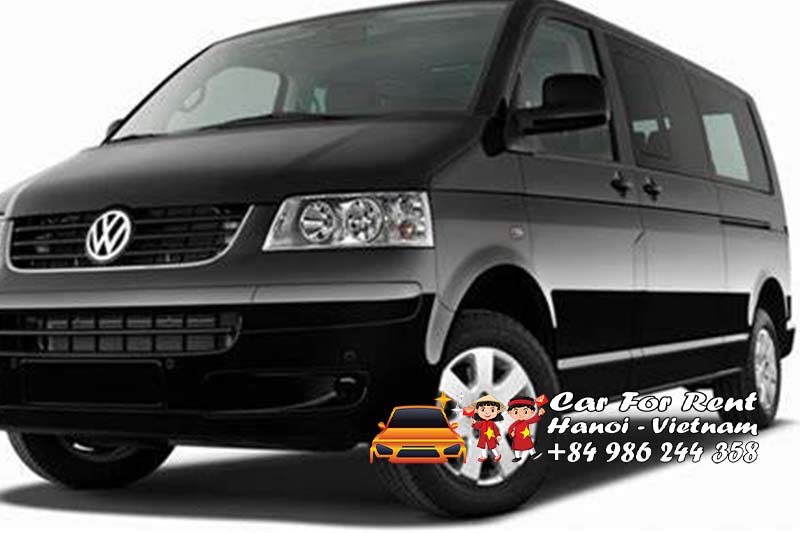vietnam travel map Vietnam is a country of stunning natural beauty, rich cultural heritage, and diverse cuisine. Whether you are looking for adventure, relaxation, history, or culture, Vietnam has something for everyone. But with so many places to visit and things to do, how do you plan your trip? That’s where a Vietnam travel map comes in handy. A Vietnam travel map is a tool that helps you visualize your itinerary, find the best routes, and discover the most amazing attractions in Vietnam. In this blog post, we will show you how to use a Vietnam travel map to create your dream vacation in Vietnam.
What is a Vietnam Travel Map?
A Vietnam travel map is a map that shows the main regions, cities, and attractions in Vietnam. It can be a physical map that you buy or print out, or a digital map that you access online or on your smartphone. A Vietnam travel map can help you:

- Get an overview of the geography and layout of Vietnam
- Identify the best places to visit based on your interests and preferences
- Plan your route and transportation options
- Estimate your travel time and budget
- Learn about the history and culture of each destination
- Find hidden gems and off-the-beaten-path spots
A Vietnam travel map can also inspire you to explore new places and experiences that you might not have thought of before. For example, you might discover a charming village, a scenic hike, or a local festival that catches your eye on the map.
How to Use a Vietnam Travel Map?
Using a Vietnam travel map is easy and fun. Here are some steps to follow:
- Decide on your travel duration and dates. This will help you narrow down your choices and prioritize your destinations.
- Choose your travel style and theme. Do you want to see the highlights or go off the beaten track? Do you prefer nature or culture? Do you want to relax or be active? Do you want to focus on one region or explore different parts of the country?
- Research your destinations and attractions. You can use online resources, guidebooks, blogs, or word-of-mouth recommendations to learn more about each place. You can also look for reviews, ratings, photos, and videos to get a sense of what to expect.
- Mark your must-see spots on the map. You can use different colors or symbols to indicate your preferences and priorities. You can also add notes or comments to remind yourself of the details.
- Connect the dots and plan your route. You can use online tools like Google Maps or Rome2rio to find the best ways to get from one place to another. You can also consider different modes of transportation, such as flights, trains, buses, taxis, motorbikes, bicycles, or boats.

- Adjust and optimize your itinerary. You can rearrange, add, or remove destinations based on your time, budget, and interests. You can also check for seasonal factors, such as weather, festivals, holidays, or closures.
- Book your accommodation and transportation in advance. This will save you time and money and ensure your availability and comfort. You can use online platforms like Booking.com or Agoda to find the best deals and reviews for hotels, hostels, homestays, or resorts. You can also use online services like 12Go Asia or Baolau to book your tickets for flights, trains, buses, or ferries.
- Enjoy your trip and be flexible. Once you have your Vietnam travel map ready, you can start packing your bags and looking forward to your adventure. But remember that things might not always go according to plan, so be prepared for some surprises and changes along the way. Be open-minded and adaptable, and don’t let minor setbacks ruin your mood. After all, traveling is about discovering new things and having fun.
What are the Best Destinations in Vietnam?
Vietnam is divided into three main regions: North, Central, and South. Each region has its own unique characteristics and attractions that appeal to different types of travelers. Here are some of the best destinations in each region that you should include on your Vietnam travel map:
North Vietnam
North Vietnam is known for its mountainous landscapes, ethnic diversity, and historical sites. Some of the most popular destinations in North Vietnam are:
- Hanoi: The capital city of Vietnam and a cultural hub with many museums, temples, and colonial architecture. Hanoi is also a great base to explore nearby attractions like Halong Bay, Sapa, Ninh Binh, and Mai Chau.
- Halong Bay: A UNESCO World Heritage Site and one of the most scenic places in Vietnam. Halong Bay features thousands of limestone islands and islets rising from the emerald waters of the Gulf of Tonkin. You can take a cruise, kayak, or swim in the bay and enjoy the stunning views.
- Sapa: A mountain town in the northwest of Vietnam and a popular destination for trekking, homestays, and cultural immersion. Sapa is home to many ethnic minority groups who live in traditional villages and wear colorful costumes. You can hike through the rice terraces, visit the local markets, or climb the Fansipan Mountain, the highest peak in Vietnam.

- Ninh Binh: A province in the south of Hanoi and a hidden gem of Vietnam. Ninh Binh is often called “Halong Bay on land” because of its similar landscape of limestone karsts and rivers. You can cycle, boat, or hike in Ninh Binh and visit attractions like Tam Coc, Trang An, Bai Dinh Pagoda, and Hoa Lu Ancient Capital.
- Mai Chau: A valley in the northwest of Vietnam and a peaceful retreat from the hustle and bustle of the city. Mai Chau is surrounded by green hills and rice fields and inhabited by friendly ethnic people. You can stay in a stilt house, enjoy the local food and music, or explore the nearby villages and nature.
Central Vietnam
Central Vietnam is known for its coastal cities, ancient towns, and cultural heritage. Some of the most popular destinations in Central Vietnam are:
- Hue: The former imperial capital of Vietnam and a UNESCO World Heritage Site. Hue is famous for its royal palaces, tombs, temples, and citadels that reflect the glory and history of the Nguyen Dynasty. Hue is also known for its cuisine, art, and festivals.
- Da Nang: The third-largest city in Vietnam and a modern metropolis with many attractions. Da Nang has beautiful beaches, such as My Khe and Non Nuoc, where you can relax or enjoy water sports. Da Nang also has impressive landmarks, such as the Dragon Bridge, the Marble Mountains, and the Ba Na Hills.
- Hoi An: A charming town on the Thu Bon River and a UNESCO World Heritage Site. Hoi An is famous for its well-preserved old town that showcases the fusion of Vietnamese, Chinese, Japanese, and French influences. Hoi An is also known for its lanterns, tailor shops, cooking classes, and nearby beaches.
- Nha Trang: A coastal city in the south of Central Vietnam and a popular destination for beach lovers. Nha Trang has a long stretch of sandy beach lined with hotels, restaurants, bars, and shops. Nha Trang also has many islands, coral reefs, hot springs, waterfalls, and amusement parks to explore.
- Dalat: A hill station in the Central Highlands of Vietnam and a romantic getaway for couples. Dalat has a cool climate, pine forests, flower gardens, and French-style villas. Dalat is also famous for its coffee, strawberries, and outdoor activities like hiking, biking, or canyoning. vietnam travel map

South Vietnam
South Vietnam is known for its vibrant cities, tropical islands, and Mekong Delta. Some of the most popular destinations in South Vietnam are:
- Ho Chi Minh City: The largest city in Vietnam and a dynamic metropolis with many contrasts. Ho Chi Minh City (or Saigon) has skyscrapers, shopping malls, and nightlife venues alongside historical buildings, museums, and markets. Ho Chi Minh City is also a gateway to other attractions like Cu Chi Tunnels, Mekong Delta, or Phu Quoc Island. vietnam travel map
- Mekong Delta: A region in the southwest of Vietnam where the Mekong River splits into many branches before reaching the sea. The Mekong Delta is known for its lush greenery, floating markets, fruit orchards, rice paddies, and fish farms. You can take a boat tour, cycle, or homestay in the Mekong Delta and experience the rural life of Vietnam. vietnam travel map
- Phu Quoc Island: The largest island in Vietnam and a paradise for beach lovers. Phu Quoc Island has white sand beaches, turquoise water, and palm trees that create a tropical atmosphere. You can swim, snorkel, or dive in Phu Quoc Island and see the colorful coral reefs and marine life. You can also visit the national park, pepper farms, pearl farms, or night market on the island. vietnam travel map
- Con Dao Islands: A group of 16 islands in the southeast of Vietnam and a hidden gem of Vietnam. Con Dao Islands are known for their pristine nature, wildlife, and history. You can relax on the secluded beaches, hike in the forest, or spot turtles, dolphins, or dugongs in the water. You can also learn about the dark past of Con Dao Islands as a former prison and a site of political resistance. vietnam travel map
- Da Lat: A city in the south of Vietnam and a popular destination for adventure seekers. Da Lat is famous for its sand dunes, fairy streams, and rock formations that create a desert-like landscape. You can ride a quad bike, slide down the sand, or fly a kite in Da Lat and enjoy the fun and thrill.

Contact us:
Car For Rent Hanoi VietNam
https://zalo.me/0986244358
Conclusion
Vietnam is a diverse and fascinating country that offers something for everyone. Whether you are looking for nature, culture, history, or adventure, you can find it in Vietnam. But to make the most of your trip, you need to plan ahead and use a Vietnam travel map. A Vietnam travel map can help you visualize your itinerary, find the best routes, and discover the most amazing attractions in Vietnam. With a Vietnam travel map, you can create your dream vacation in Vietnam and have an unforgettable experience.












